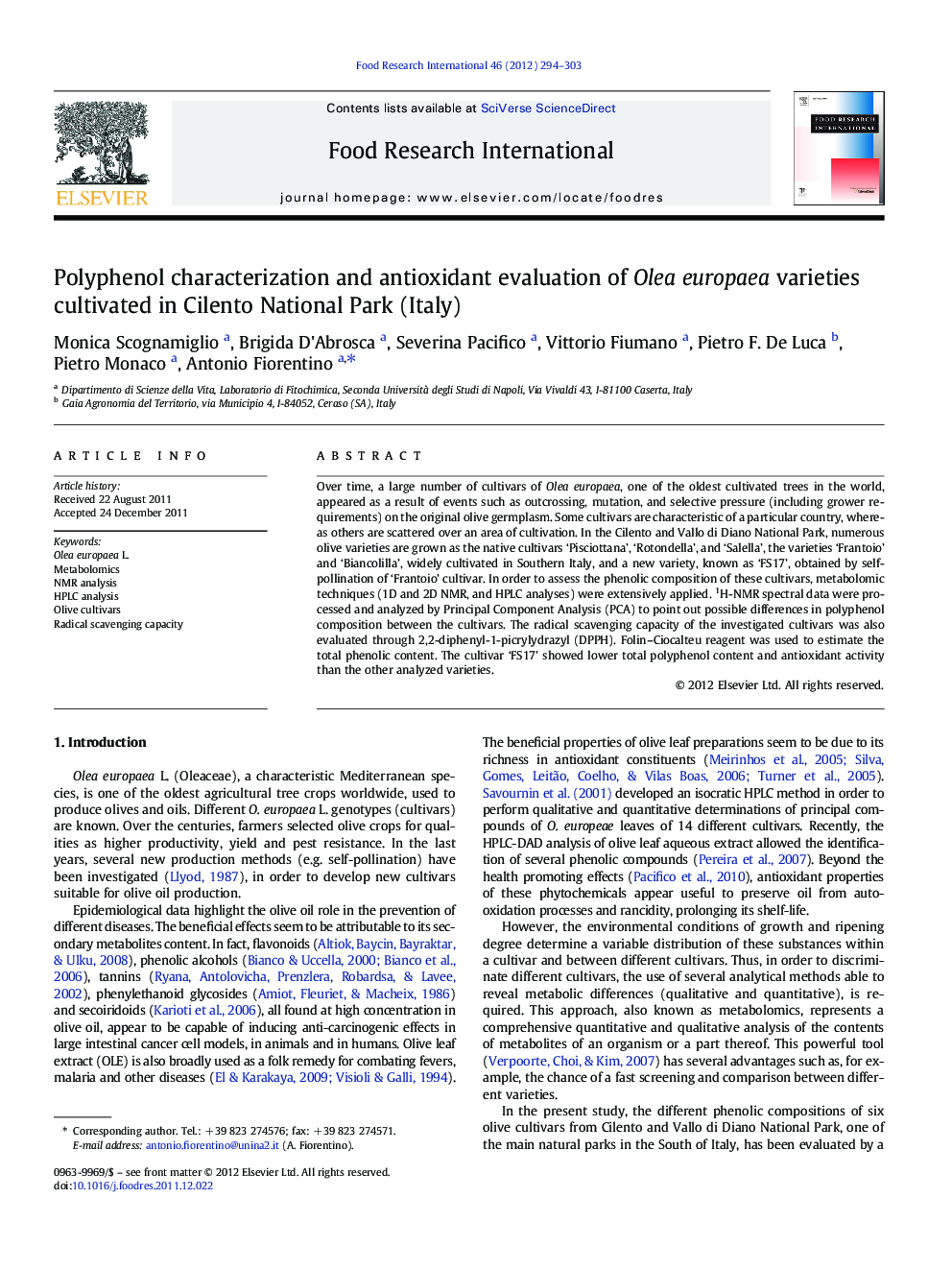| Article ID | Journal | Published Year | Pages | File Type |
|---|---|---|---|---|
| 4561914 | Food Research International | 2012 | 10 Pages |
Over time, a large number of cultivars of Olea europaea, one of the oldest cultivated trees in the world, appeared as a result of events such as outcrossing, mutation, and selective pressure (including grower requirements) on the original olive germplasm. Some cultivars are characteristic of a particular country, whereas others are scattered over an area of cultivation. In the Cilento and Vallo di Diano National Park, numerous olive varieties are grown as the native cultivars ‘Pisciottana’, ‘Rotondella’, and ‘Salella’, the varieties ‘Frantoio’ and ‘Biancolilla’, widely cultivated in Southern Italy, and a new variety, known as ‘FS17’, obtained by self-pollination of ‘Frantoio’ cultivar. In order to assess the phenolic composition of these cultivars, metabolomic techniques (1D and 2D NMR, and HPLC analyses) were extensively applied. 1H-NMR spectral data were processed and analyzed by Principal Component Analysis (PCA) to point out possible differences in polyphenol composition between the cultivars. The radical scavenging capacity of the investigated cultivars was also evaluated through 2,2-diphenyl-1-picrylydrazyl (DPPH). Folin–Ciocalteu reagent was used to estimate the total phenolic content. The cultivar ‘FS17’ showed lower total polyphenol content and antioxidant activity than the other analyzed varieties.
► The metaboloma of Olea europaea varieties from Cilento National Park is reported. ► Metabolomic profiles were obtained by 1D and 2D NMR, and HPLC analyses. ► Antioxidant properties of the varieties are discussed. ► ‘FS-17’cultivar has a lower phenol content than other investigated cultivars.
